The Mediterranean
Welcome to the Mediterranean, a sun-soaked haven open since 1997, nestled beneath the Japanese Garden. As you enter, you'll be greeted by two striking cultivars of the Cappadocian maple (Acer cappadocicum): the springtime yellow-flowering 'Aureum' and the vibrant red-leaved 'Rubrum'.
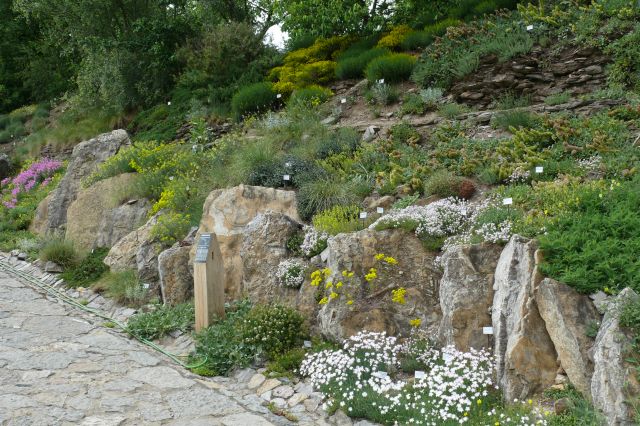
Upper terrace with predominantly Turkish plant species
Turkish Flora – Steep Slope Below the Japanese Garden
This captivating steep slope showcases plants native to Turkey. Here, you'll discover a tapestry of low, cushion-like alpine plants, including prickly thrifts (Acantholimon), stonecresses (Aethionema) and globe daisies (Globularia). Bright yellow blooms from Onosma and Alyssum add a burst of colour, complemented by two varieties of creeping skullcaps: Scutellaria orientalis with yellow flowers and S. diffusa with blue blooms. The delicate perennial Petrorhagia offers charming tiny flowers nearly throughout the season.
In addition to these alpines, the terrace features larger perennials such as the Oriental poppy (Papaver orientale), Persian poppy (P. bracteatum), and Crambe orientalis. Beneath a grand rock, you'll find the fascinating Syrian rue (Peganum harmala), historically used to produce a red dye for cotton, notably in Persian carpets. Its seeds served various purposes, including medicine, spice, and narcotic (toxic), while the foliage was used for incense. Along the fence, look for young Lebanon cedars (Cedrus libani) and the rarely cultivated Oriental alder (Alnus orientalis), a heat-loving species from Cyprus.
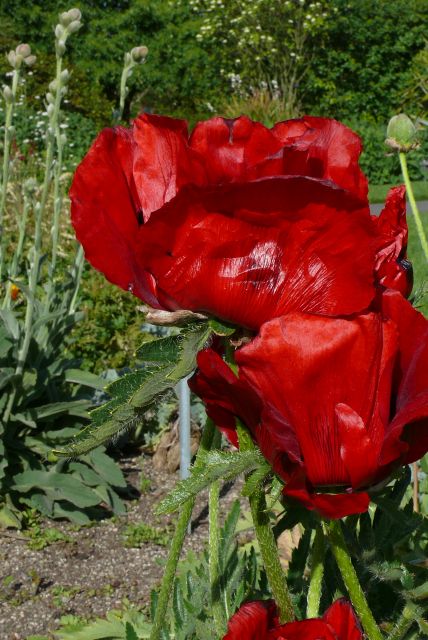
Papaver cf bracteatum
Mediterranean Flora
As you descend under the concrete walkway, immerse yourself in the flora of the Mediterranean. Here, the Montpellier maple (Acer monspessulanum), resembling the field maple (Acer campestre), makes its mark. Nearby, the rarely cultivated Mediterranean subspecies of the common hawthorn (Crataegus monogyna subsp. azarella) stands out with its smaller, deeply lobed leaves. Dominating this section are the Mediterranean cypresses (Cupressus sempervirens), iconic conifers commonly found throughout the region.
In early summer, marvel at the yellow, pea-like flowers of Spanish broom (Spartium junceum). Not far off, the evergreen laurel-leaf cistus (Cistus laurifolius) blooms with striking white flowers, notable for its ability to endure Czech winters. Above a bench, the hardy wild jasmine (Jasminum fruticans) adds a touch of elegance.
Rock Gardens: A Mediterranean Alpine Wonderland
Explore the rock gardens, where a diverse array of alpine and perennial plants from the Mediterranean await. Most of these plants were collected during expeditions in 1995 and 1996. The garden features species from rocky steppes and mountainous regions, including cushion-forming woodruff (Asperula)and sandworts (Arenaria).
Admire the striking flowers of flax species – the white-flowered Linum salsoloides and the yellow L. dolomiticum. The rock gardens also feature spiny cushions of Genista horrida and various smaller species of Genista and Cytisus, along with the creeping snow-in-summer (Cerastium tomentosum) with its silver leaves.
On warm, sunny days, enjoy the delightful fragrances of thyme, lavender, winter savory (Satureja montana), rock thyme (Acinos alpinus), and Micromeria thymifolia, evoking memories of a Mediterranean summer. Complementing this aromatic display are grasses, including the spring-flowering Sesleria insularis and various Festuca species. Throughout the summer, several species of centaury (Centaurea) bloom among the grasses.
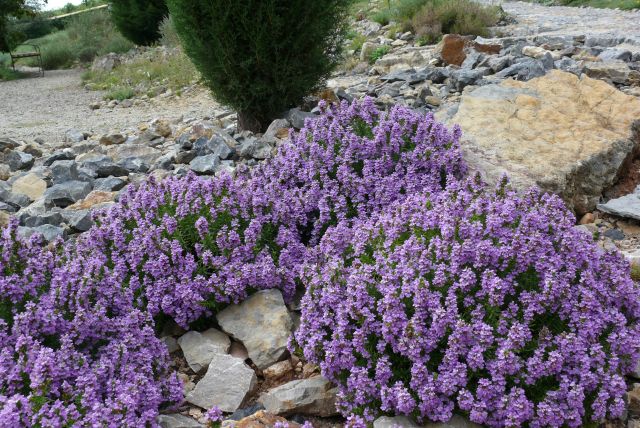
Satureja montana var. illyrica
Vine Wall and Limestone Features
The vine wall showcases a selection of ivy species alongside intriguing herbs, including hellebores like the black hellebore (Helleborus niger) from the Southern Alps. This species blooms early in spring with white or pinkish flowers, its name reflecting its dark-coloured roots.
The limestone used in the rock gardens is sourced from the Kosov and Mořina quarries in the Bohemian Karst (Český kras), with some stones containing fossils of Devonian cephalopods from the genus Orthoceras.
Warm-Loving Shrubs and Lavender Field
On the slope above the irises, you’ll find an array of warm-loving shrubs. Among the most beautiful is the Judas tree (Cercis siliquastrum), which blooms in early May with both its native pink form and a white-flowering variety. According to legend, Judas Iscariot hanged himself from this tree after betraying Christ. In spring, the striking white panicles of manna ash (Fraxinus ornus) also bloom here. Beneath the path leading to the vineyard gate, discover the rare, slow-growing oriental sweetgum (Liquidambar orientalis), valued for its resin used as incense.
In the lowest section of the exposition, a lavender field (Lavandula angustifolia), planted in 2012, thrives. The slope above it was renovated and replanted the following year. Visitors can explore a variety of lower-growing herbs and alpine plants, primarily of Turkish origin. Notable examples include several subspecies of yellow helmet flower (Scutellaria orientalis), botanical species of the Aurinia genus, yarrow, cornflower, and lamp wick plants, among other fascinating species.
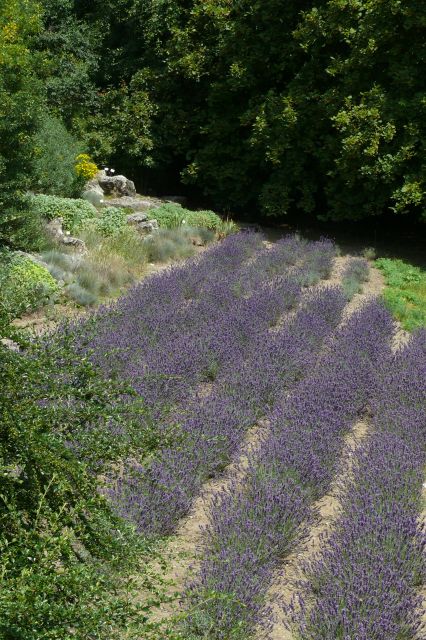
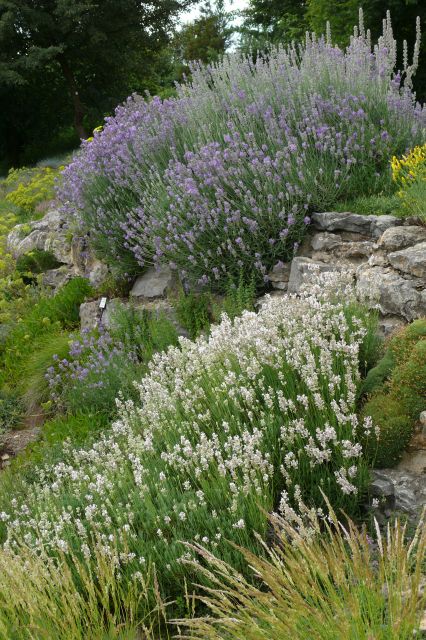
Lavender field in the Mediterranean exposition (Lavandula angustifolia)
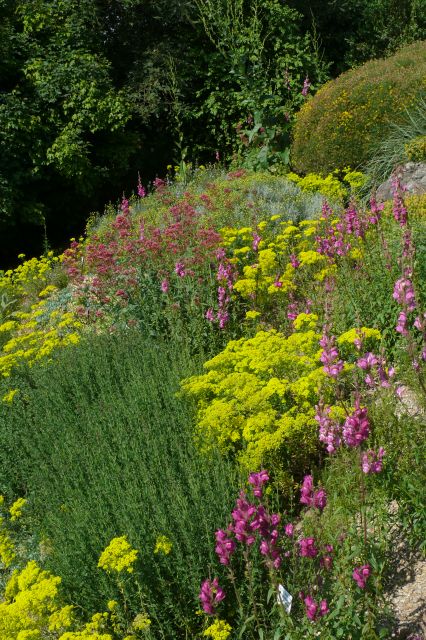
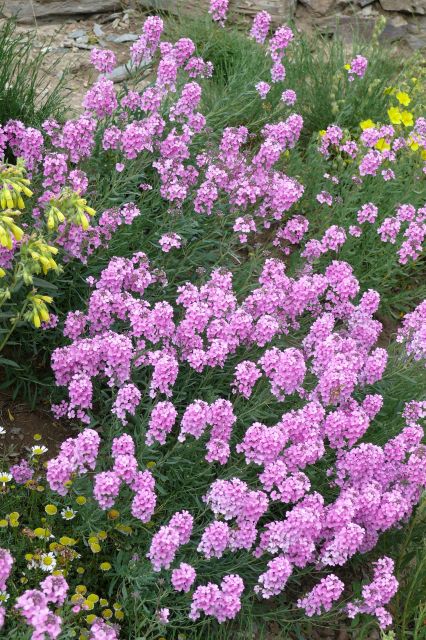
Summer aspect of the Mediterranean expozitiont - Persian candytuft (Aethionema grandiflorum)
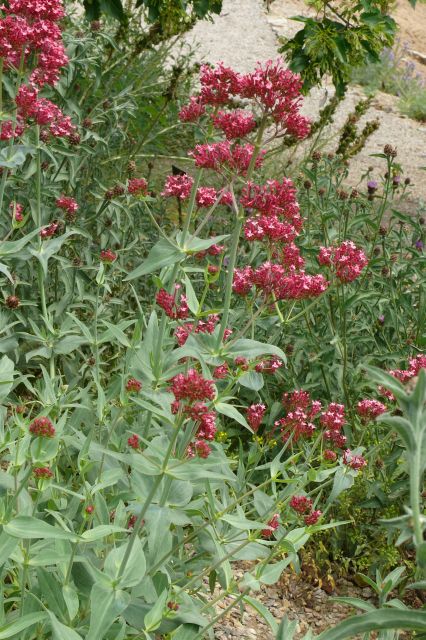
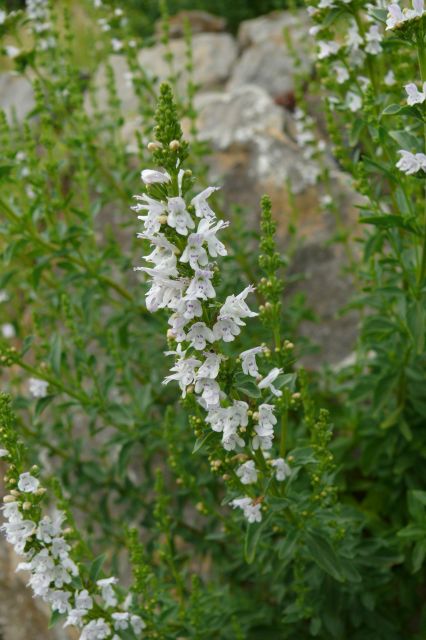
Red valerian (Centranthus ruber), Micromeria thymifolia
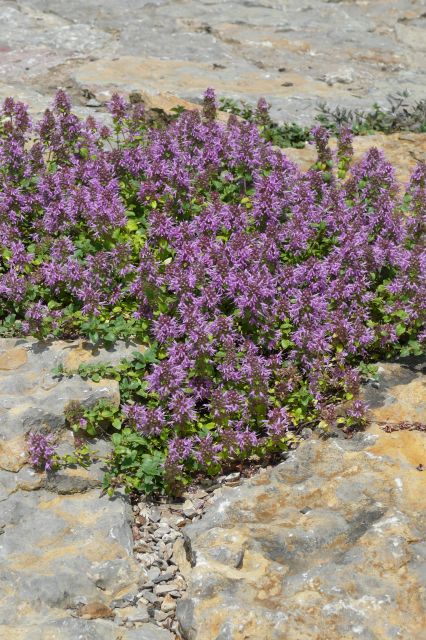
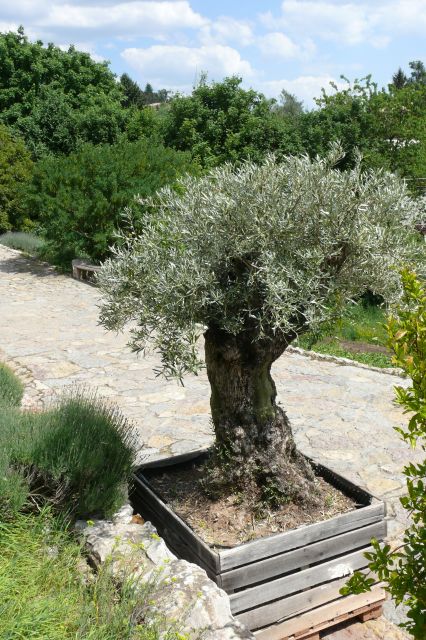
Thyme growing in the crevice between limestone rocks. A mature olive tree complements the Mediterranean exposition during the summer.